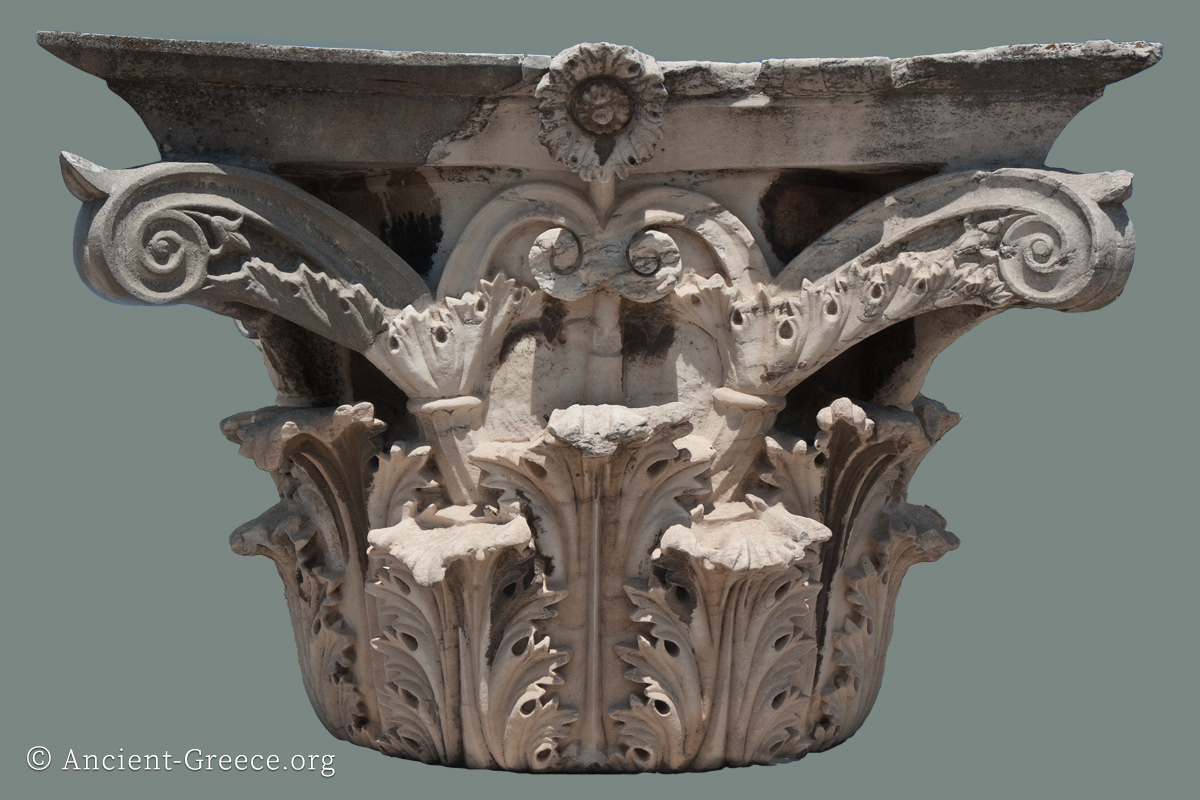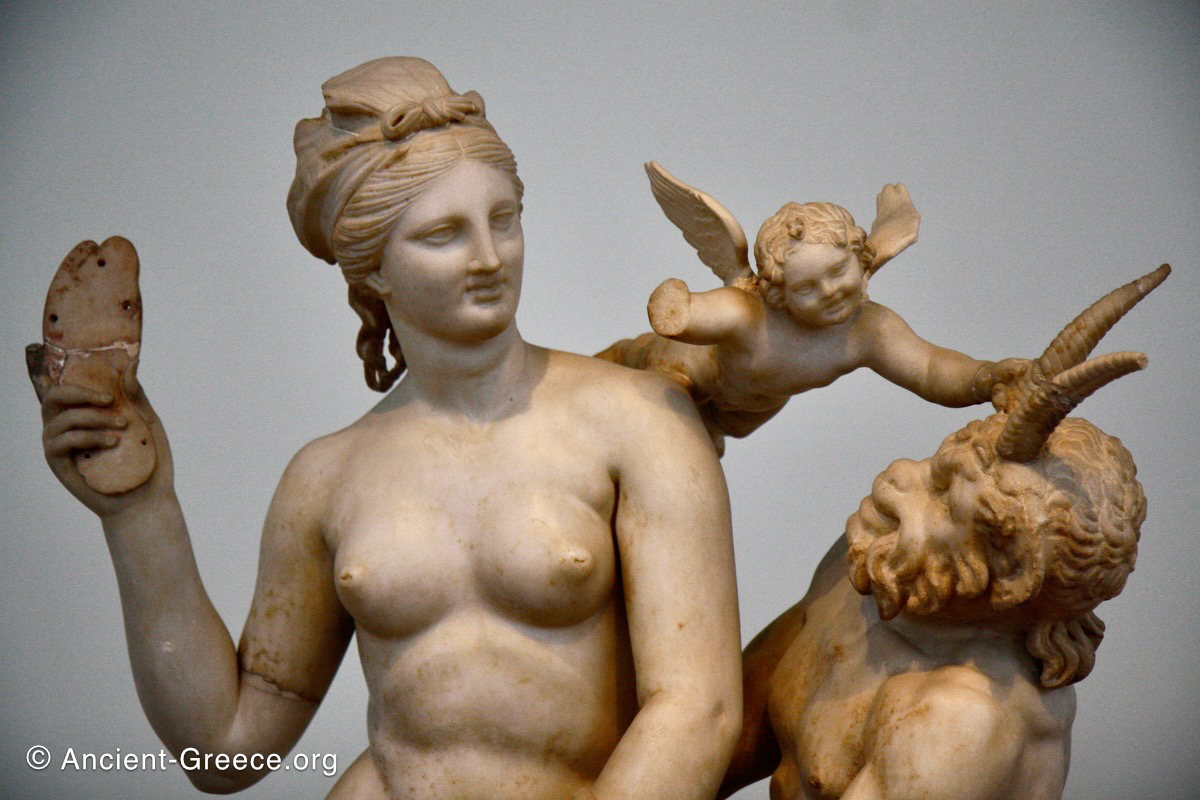
.

Hellenistic and Roman art from excavations across the country is represented at the National Archaeological Museum in Athens with a plethora of renown sculptures and artifacts.
The Hellenistic age begins with the death of Alexander the Great when Hellenic civilization expanded from the narrow confines of mainland Greece city-states to become more expansive and cosmopolitan across the entire Middle East.
Hellenistic

Top row, counter-clockwise:
- Horse and Young Jockey, known as “Artemision Jockey”. Circa 140 BCE.
Retrieved in pieces from the Artemision shipwreck off Cape off the coast of Euboea. The young jockey of the galloping horse will have held the reins in his left hand and a whip in his right. The contractions and furrows on his face, especially on the forehead, reveal agony and passion. Large parts of the body and the tail have been restored. - Aphrodite, Pan, and Eros. Circa 100 BCE.
The Group of sculptures known as Aphrodite, Pan and Eros was found in a southern room of the “House of the Poseidoniastai of Beryttos” (Berut), in Delos island. It is 1.55 tall. - Portrait head from a statue of a philosopher. About 240 BCE. Bronze.
Found in the Antikythera shipwreck. The eyeballs are made of a different material and the irises of glass paste. This statue depicted a Cynic philosopher, probably Bion the Borysthenite.
Bottom row, left to right:
- Gold crown with flowers.
- Hairnet with the relief bust of Artemis with quiver. Gold, garnets. 3rd c. BCE.
Roman
- Statue of the emperor Augustus. Bronze. Found in Agios Efstratios in Euboea. 12-10 CE.
- Roman portraits and a herm.
- Mosaic floor of a house depicting the head of Medusa. 2nd c. CE.
Antikythera Mechanism
The Antikythera Mechanism bronze fragments on exhibit at the National Archaeological Museum in Athens, Greece. Circa 2nd – 1st c. BCE.
Found on an ancient shipwreck off the coast of Antikythera island. Dated to 80 BCE (according to National Archaeological Museum signage next to it), or to the 2nd century BCE (according to wikipedia).
The mechanism has 32 gear wheels and plaques bearing Greek inscriptions relating to the signs of the zodiac and the months. It is accepted that the machine is a calendrical computing machine: it determines the time on the basis of the movements of the sun and moon, the relationship between them (eclipses), and the movements of the other stars and planets known at that period.
The mechanism was probably made at the School of Poseidonios on Rhodes. Cicero, who visited the island in 79/78 BC, reports that a similar device was made by the Stoic philosopher Poseidonios of Apameia.
The design of the Antikythera mechanism appears to follow the tradition of Archimedes’ planetarium devices, and to be connected with sundials. Its operation is based on the use of gear wheels. The differential gear assembly used to take the difference between two rotations is first found in the Antikythera mechanism, which is one of the most important achievements of ancient technology.
